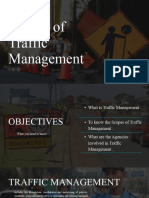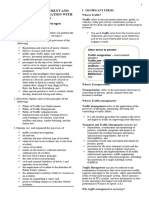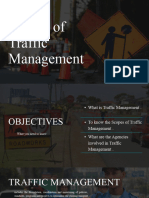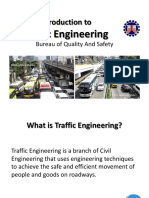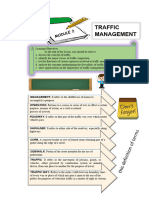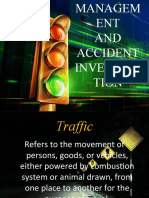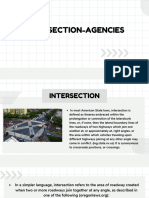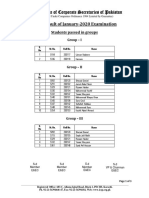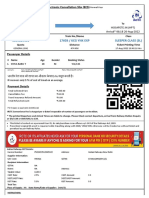0% found this document useful (0 votes)
60 views24 pagesGroup 1 Set 2 Report
The document discusses traffic management which includes planning, organizing, directing, supervising, coordinating, operating, recording and budgeting traffic affairs. It summarizes the goals of traffic management as speedy, comfortable and safe movement of traffic. It also lists the various agencies involved in traffic management such as the Department of Transportation, Land Transportation Office, local government units and law enforcement. The document outlines where traffic management is applied including highways, roads, intersections and discusses traffic control devices used.
Uploaded by
JAMAICA FAITH BETITACopyright
© © All Rights Reserved
We take content rights seriously. If you suspect this is your content, claim it here.
Available Formats
Download as PPTX, PDF, TXT or read online on Scribd
0% found this document useful (0 votes)
60 views24 pagesGroup 1 Set 2 Report
The document discusses traffic management which includes planning, organizing, directing, supervising, coordinating, operating, recording and budgeting traffic affairs. It summarizes the goals of traffic management as speedy, comfortable and safe movement of traffic. It also lists the various agencies involved in traffic management such as the Department of Transportation, Land Transportation Office, local government units and law enforcement. The document outlines where traffic management is applied including highways, roads, intersections and discusses traffic control devices used.
Uploaded by
JAMAICA FAITH BETITACopyright
© © All Rights Reserved
We take content rights seriously. If you suspect this is your content, claim it here.
Available Formats
Download as PPTX, PDF, TXT or read online on Scribd
/ 24








